从 Vue 1.x 迁移 — Vue.js
Posted 爱喝酸奶的吃货
tags:
篇首语:本文由小常识网(cha138.com)小编为大家整理,主要介绍了从 Vue 1.x 迁移 — Vue.js相关的知识,希望对你有一定的参考价值。
闲聊:
又到周五啦,明天不用上班啦哈哈哈哈哈,想想就好开心啊,嘻嘻,小颖这周三的早晨做个一个美梦,把自己愣是笑醒了,梦的大概剧情我忘记了,总之宝宝是被笑醒的,醒了之后还傻笑了一段时间,真希望每天早上都能梦到这样的梦,估计当时我家仔仔看着我傻笑内心是崩溃的,估计在想,这傻妞又做什么梦了,太能折腾了,哭醒、笑醒、从床上掉下去 摔醒,估计也就我家铲屎的有这技能。哈哈哈哈

目录:
1.v-for



vue1.0例子:
效果图:
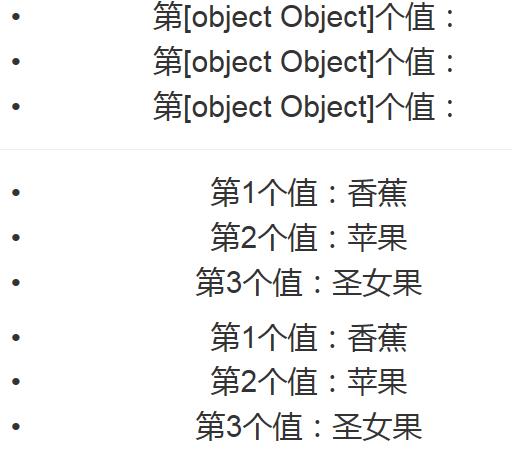
vue1.0中的 v-for 的用法:
<template> <div class="father-container"> <ul> <li v-for=\'(val,index) in fruitData\'>第{{index}}个值:{{val.name}}</li> </ul> <hr> <ul> <li v-for=\'(index,val) in fruitData\'>第{{index+1}}个值:{{val.name}}</li> </ul> <ul> <li v-for=\'val in fruitData\'>第{{$index+1}}个值:{{val.name}}</li> </ul> </div> </template> <script> export default { components: {}, methods: {}, watch: {}, data() { return { fruitData: [{ name: \'香蕉\' }, { name: \'苹果\' }, { name: \'圣女果\' }] } } } </script>
vue2.0例子:
效果图:
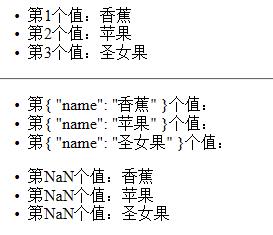
vue2.0中 v-for 的用法:
<template> <div class="father-container"> <ul> <li v-for=\'(val,index) in fruitData\'>第{{index+1}}个值:{{val.name}}</li> </ul> <hr> <ul> <li v-for=\'(index,val) in fruitData\'>第{{index}}个值:{{val.name}}</li> </ul> <ul> <li v-for=\'val in fruitData\'>第{{$index+1}}个值:{{val.name}}</li> </ul> </div> </template> <script> export default { components: {}, methods: {}, data() { return { fruitData: [{ name: \'香蕉\' }, { name: \'苹果\' }, { name: \'圣女果\' }] } } } </script>
2.twoWay-Prop-的参数-移除
小颖在之前用vue1.的时候子组件可以通过Prop中twoWay的参数,直接修改父组件的值,但是现在不行了。
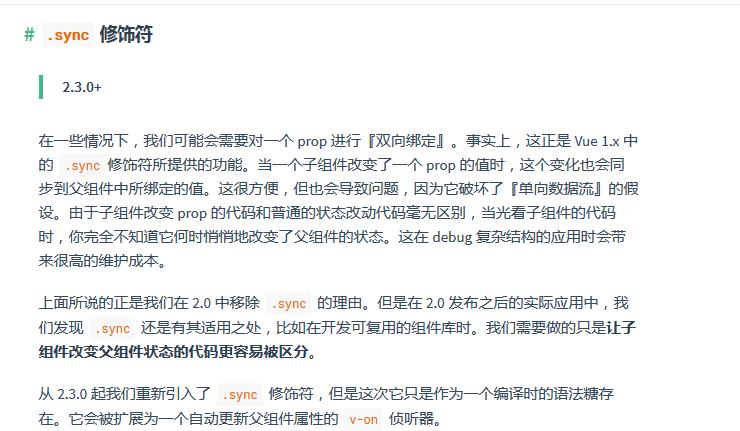
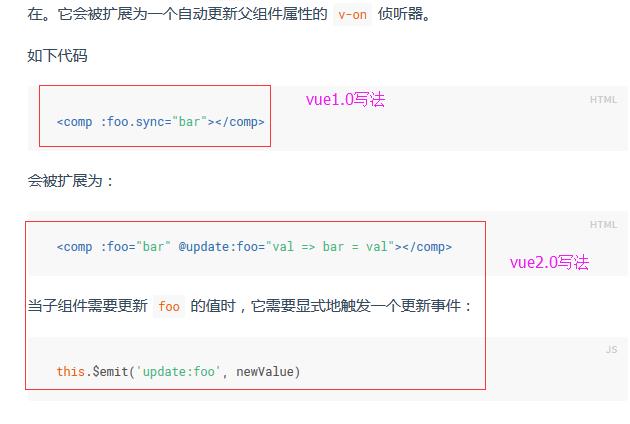
光看,可能大家不太理解,下面小颖就做个demo,帮大家更好的理解。嘻嘻,
目录:
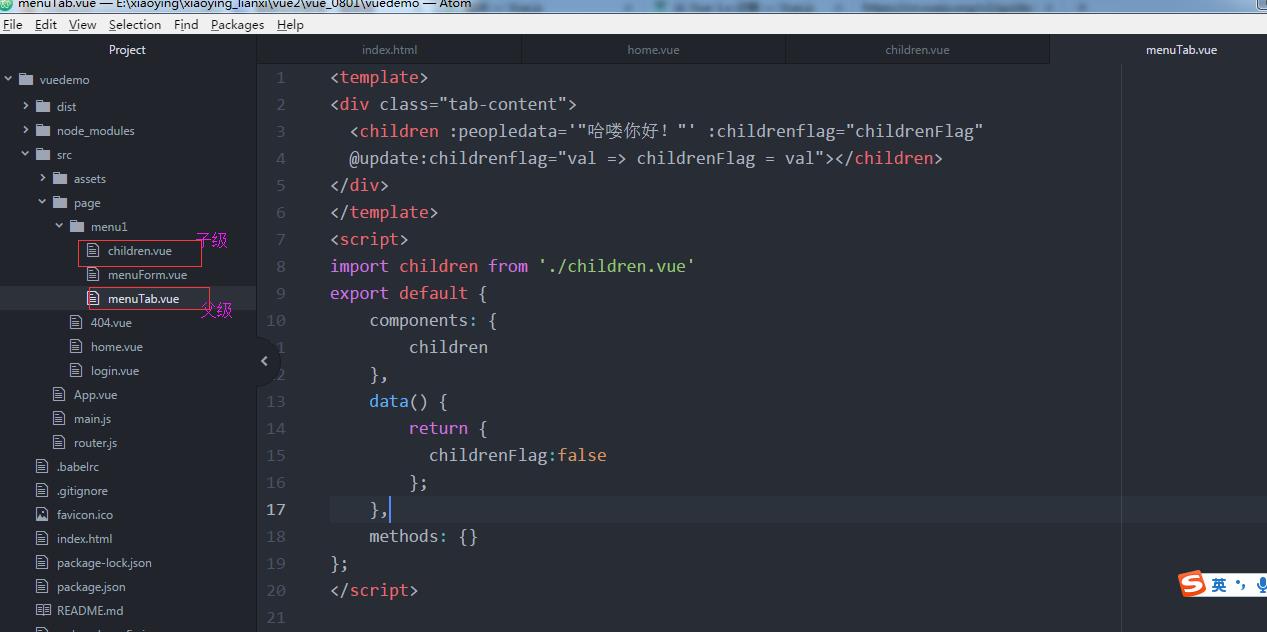
父组件:
<template> <div class="tab-content"> <children :peopledata=\'"哈喽你好!"\' :childrenflag="childrenFlag" @update:childrenflag="val => childrenFlag = val"></children> </div> </template> <script> import children from \'./children.vue\' export default { components: { children }, data() { return { childrenFlag:false }; }, methods: {} }; </script> <style lang="css"> </style>
子组件:
<template lang="html"> <div class="children-content" v-if=\'childrenflag\'>{{peopledata}} <div class="fruit-content"> <ul v-for=\'fruit in fruitData\'> <li>{{fruit.name}}</li> </ul> </div> </div> </template> <script> export default { components: {}, props: { peopledata: { type: String }, childrenflag: { type: Boolean } }, mounted: function() { this.$emit(\'update:childrenflag\', !this.childrenflag); }, data() { return { fruitData: [{ name: \'香蕉\' }, { name: \'苹果\' }, { name: \'圣女果\' }] } } } </script> <style lang="css"> </style>
当父组件的值 childrenFlag:false 时: 当父组件的值 childrenFlag:true 时:
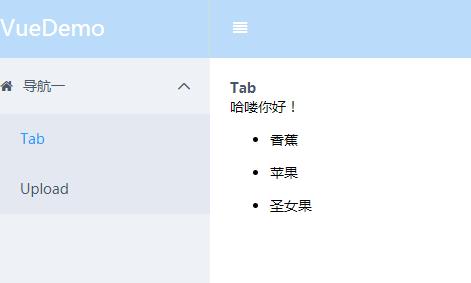
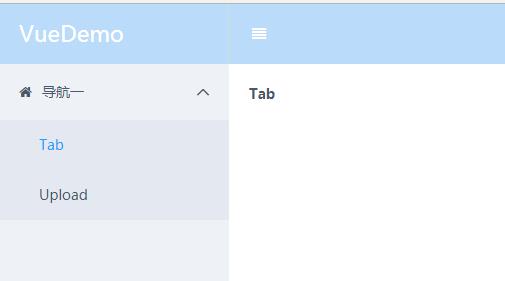
这是怎么实现的呢?
在父组件中:

在子组件中:

或者用 parent 来实现子组件修改父组件的值。
代码:
父组件调用子组件的时候直接调用,传好参数,别的不用改。

子组件中:

3.ready-替换
以前的写法:
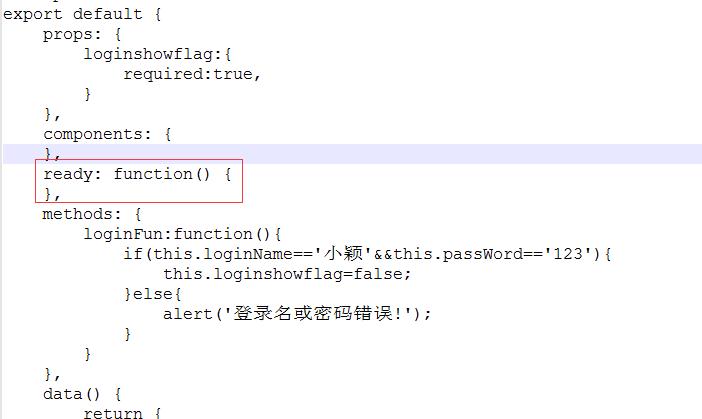
vue2.0的写法:
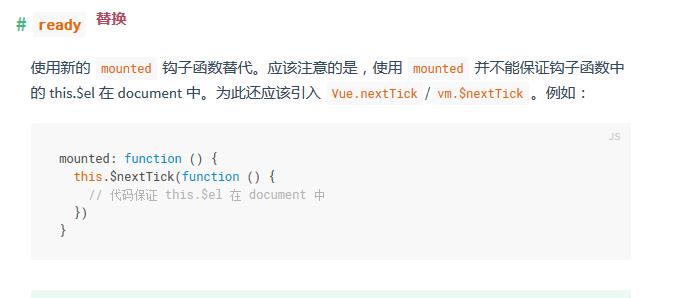
4.coerce-Prop的参数-移除
vue1.0:
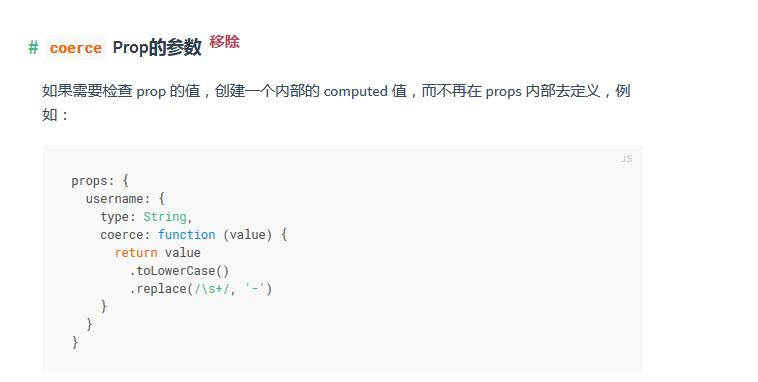
vue2.0
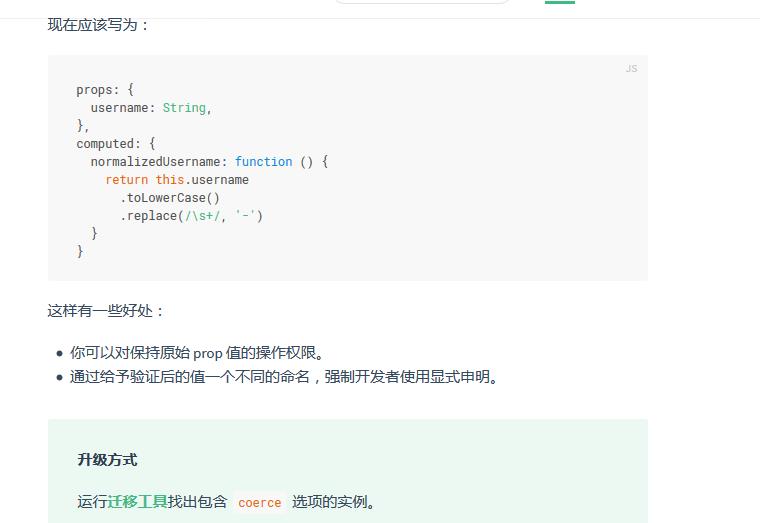
vue1.0例子:
效果图:

App.vue
<style> div#app { width: 600px; text-align: center; margin: 200px auto 0; } </style> <template> <div class=\'all-page-container\'> <a v-link=\'"/father"\'>父组件</a> <router-view transition=\'animation\' class=\'content\' keep-alive></router-view> </div> </template> <script> import father from \'./page/father.vue\' export default { components: { father }, methods: {}, data() { return {} } } </script>
father.vue
<style> .last-p { border-bottom: 1px solid pink; } </style> <template> <div class="father-container"> <p>父组件引用子组件:</p> <p>childrenShowFlag:{{childrenShowFlag}}</p> <p class="last-p">toLowerData:{{toLowerData}}</p> <children :childrenshowflag.sync=\'childrenShowFlag\' :tolowerdata.sync=\'toLowerData\'></children> </div> </template> <script> import children from \'./children.vue\' export default { components: { children }, methods: {}, watch: {}, data() { return { childrenShowFlag: false, toLowerData: \'AAAA\' } } } </script>
children.vue
<template> <div class=\'children-container\'> children子组件内容: <p>childrenshowflag:{{childrenshowflag}}</p> <p>tolowerdata:{{tolowerdata}}</p> <p>normalizedUsername:{{normalizedUsername}}</p> </div> </template> <script> export default { props: { childrenshowflag: { required: true, coerce: function(value) { return !value; } }, tolowerdata: { type: String } }, computed: { normalizedUsername: function() { this.tolowerdata = this.tolowerdata.toLowerCase(); return this.tolowerdata.toLowerCase(); } }, components: {}, ready: function() {}, methods: {}, data() { return {} } } </script>
通过上面的示例,大家应该发现coerce-Prop的参数只会改变子组件中的值,父组件的值不变,即使是在vue1.0中父组件和子组件是用twoWay的方式绑定的,但在computed中改变子组件的值,父组件的值也会发生变化。
vue2.0例子:
效果图:
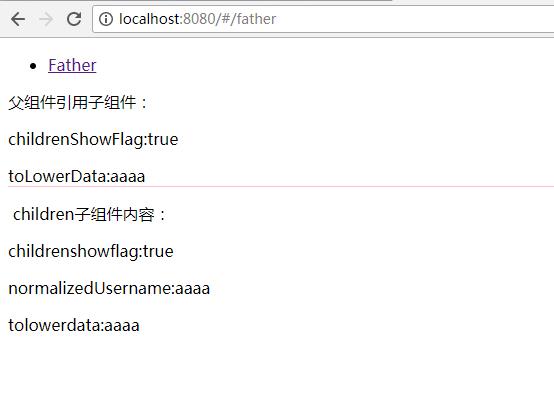
App.vue
<template> <div id="app"> <ul> <li> <router-link to="/father">Father</router-link> </li> </ul> <router-view></router-view> </div> </template> <script> export default {} </script>
father.vue
<style> .last-p { border-bottom: 1px solid pink; } </style> <template> <div class="father-container"> <p>父组件引用子组件:</p> <p>childrenShowFlag:{{childrenShowFlag}}</p> <p class="last-p">toLowerData:{{toLowerData}}</p> <children :childrenshowflag=\'childrenShowFlag\' :tolowerdata=\'toLowerData\' @update:tolowerdata="val => toLowerData = val"></children> </div> </template> <script> import children from \'./children.vue\' export default { components: { children }, methods: {}, data() { return { childrenShowFlag: false, toLowerData: \'AAAA\' } } } </script>
children.vue
<style> .last-p { border-bottom: 1px solid pink; } </style> <template> <div class="father-container"> <p>父组件引用子组件:</p> <p>childrenShowFlag:{{childrenShowFlag}}</p> <p class="last-p">toLowerData:{{toLowerData}}</p> <children :childrenshowflag=\'childrenShowFlag\' :tolowerdata=\'toLowerData\' @update:tolowerdata="val => toLowerData = val"></children> </div> </template> <script> import children from \'./children.vue\' export default { components: { children }, methods: {}, data() { return { childrenShowFlag: false, toLowerData: \'AAAA\' } } } </script>
通过上面的示例,大家会发现:
当父组件和子组件通过

实现子组件改变父组件的值时,子组件中:

在computed中就不能再用:this.tolowerdata = this.tolowerdata.toLowerCase();
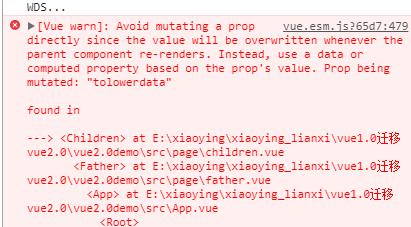
所以小颖给其重新定义了一个变量,改变这个变量的值然后再 this.$emit(\'update:tolowerdata\', this.tolowerString); 在这个例子中,其实子组件的值改变后,父组件的值也发生了变化。
5.#v-el-和v-ref-替换
vue1.0用法:
请看小颖之前写的一篇文章:vue实例属性(vm.$els)
vue2.0用法:
<script> export default { methods: { //点击登录页面中的登录按钮,实现用户登录 loginFun: function() { var userPhone = this.$refs.phone.value; console.log(userPhone); } }, data() { return { userData: { userPhone: \'15388646322\', passWord: \'yy1028\' } } } } </script>

(未完待续..............................................................................................)
以上是关于从 Vue 1.x 迁移 — Vue.js的主要内容,如果未能解决你的问题,请参考以下文章